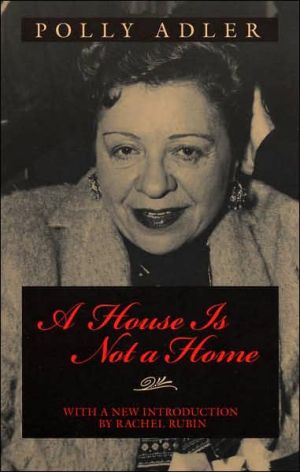

 |

|

The average rating for A House Is Not A Home based on 2 reviews is 3.5 stars.
Review # 1 was written on 2019-05-31 00:00:00 James Specyal James SpecyalIf you are drawn to the colorful personalities of the Roaring Twenties and the Hungry Thirties, or if you have a particular interest in the history of sex-work in the U.S.A., then you will probably enjoy Polly Adler's autobiography, A House is not a Home. Polly Adler was one of New York City's most notorious madams, not only in the prosperous heyday before the Wall Street crash, but for many years after. She was friendly with gangsters ("Dutch" Schultz, "Lucky" Luciano), and celebrities (Robert Benchley and the Algonquin crowd, Wallace Beery, Jack Dempsey), and catered to politicians (Mayor Jimmy Walker), the sons of Gotham's best families, and the Wall Street elite. Polly's business card (no name'just a picture of a parrot and a phone number) was well-known; "going to Polly's"'if only for drinks or for breakfast'was (even for women) a fashionable thing to do. Polly tells us of her early years in Russia, as the eldest of nine children. Although she wished to go to school'the rabbi tutored her a little'her father decided his children would be better off in America, so he began sending them, starting with Polly. She stayed with relatives in New York and began working in a corset factory; there she was raped by her boss, became pregnant, and had an abortion. Her family turned their backs on her, and Polly was out on her own. Her career as a madam began almost casually, when a bootlegger buddy proposed a deal to her: he would finance a nice apartment for her, provided she would reserve a room where he could bring his lover, a socially prominent married woman. Polly agreed, and sometime later, after the bootlegger's romance went bus, he asked her to find him a new girl'for a finder's fee. Before long, she has established her own "house." Polly tells us about her career, the good times and the bad, and there are plenty of interesting stories along the way, about the girls, the johns, the crooked cops, the Manhattan high-life and low-life. She also tells of her entanglement with the Seabury Investigation (1931) into municipal corruption, and her conviction five years later for running a disorderly house, which resulted in a 30-day sentence. From there, the account becomes sadder, and'frankly'somewhat less interesting. But Polly is a trooper to the last; she soldiers on. I'll end with a couple of passages that characterize my favorite part of the book'the Twenties.. First, a description of Polly's "house" in "the fifties near Seventh Avenue": Most of the décor was period French'Louis Quinze and Louis Seize, which is sort of traditional for a house'and I acquired some really valuable antiques. Cabinets and tables, a Sevres dinner service and a Gobelin tapestry depicting Vulcan and Venus having a tender moment while Eros took over Vulcan's smithy and forged a set of arrows. The bar was supposed to be Egyptian in style'King Tut's tomb had been opened just the year before and there had been a lot of publicity about it'and there was also a Chinese room, as mah-jongg was all in vogue. Here, an account of the typical conclusion of a fashionable night-on the town'in Harlem: Or perhaps the boys tooled up to Harlem to one of the rent parties at which jazz musicians helped their friends collect the dough for the month's nut. And maybe they kept on rolling until they landed in the hands of "money," a little hunchback who was one of Harlme's best-kown characters. Money really cleaned up steering white customers on what they called 'slumming tours," which usually ended up at a dive run by a girl called Sewing Machine Bertha. There they would be shown lewd pictures as a preview to the performance of the same tableaux by live actors, white and colored. Money also supplied reefers and cocaine and morphine so that the "upper classes" could have themselves a real low-down time. |
Review # 2 was written on 2009-09-21 00:00:00 Dave Fawns Dave FawnsIncredibly interesting view of New York in the 20's and 30's. This was a very interesting woman and her story brings up issues of sexism, class, and the ethics of sex and class. |
CAN'T FIND WHAT YOU'RE LOOKING FOR? CLICK HERE!!!